This document presents a Simulink model for damping power system oscillations using FACTS devices. It describes a hybrid series compensation scheme using a single-phase thyristor controlled series capacitor (TCSC) and fixed capacitors on the other two phases. The TCSC is equipped with a proportional-integral controller to modulate its reactance based on stabilizing signals. Case studies on a test power system show the hybrid scheme provides better damping than fixed compensation alone. The best damping was achieved using local generator angle differences as stabilizing signals.
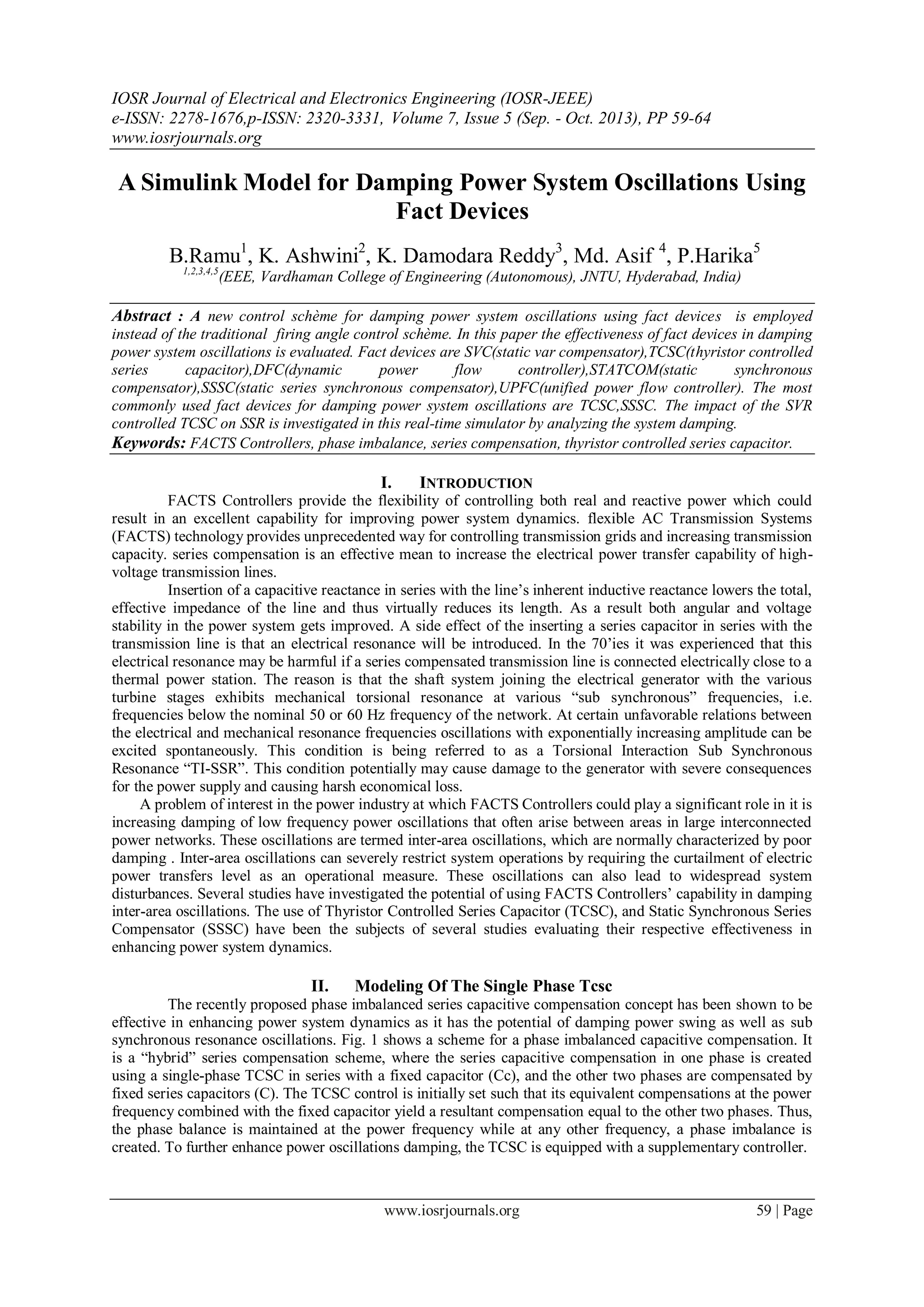
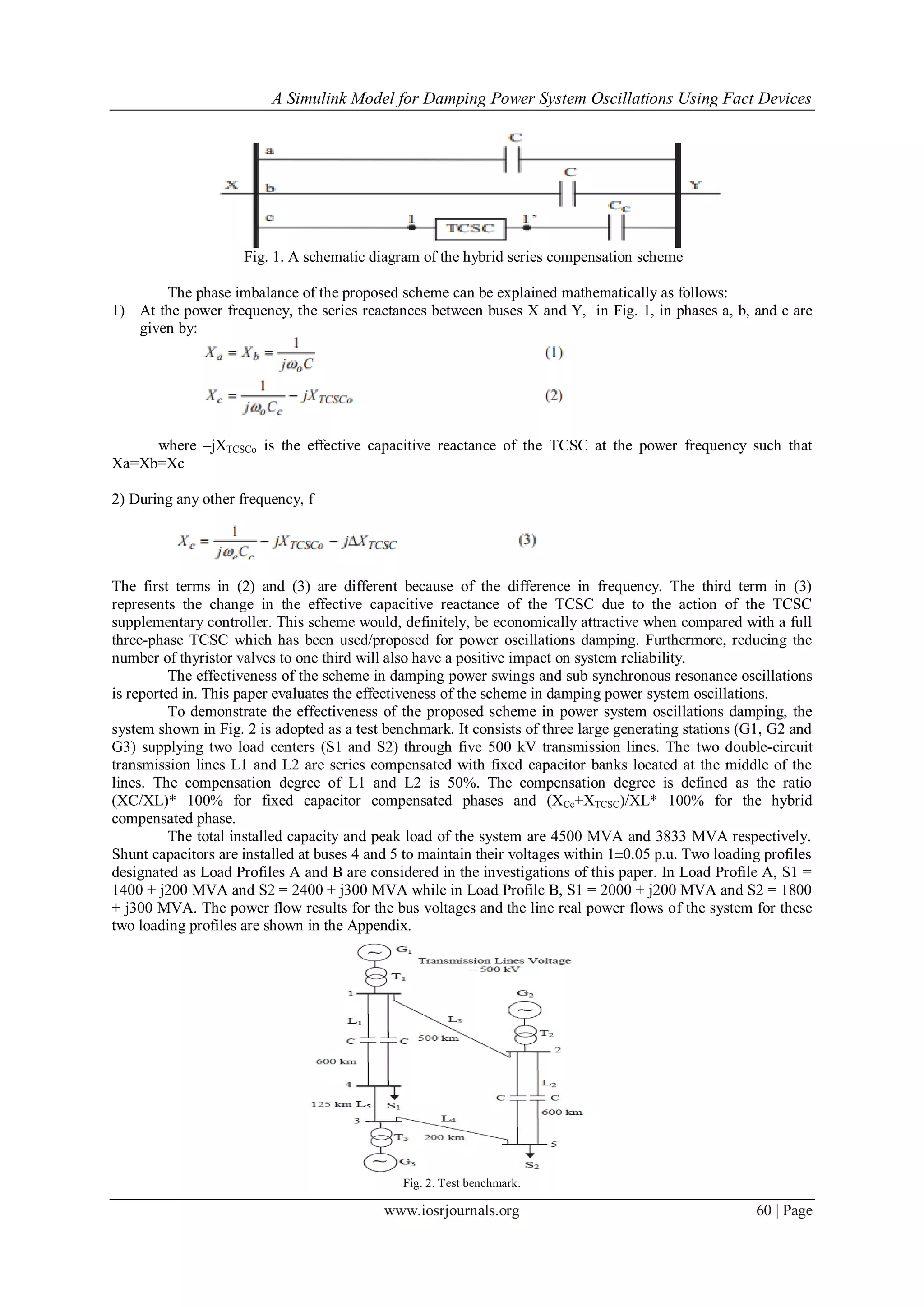
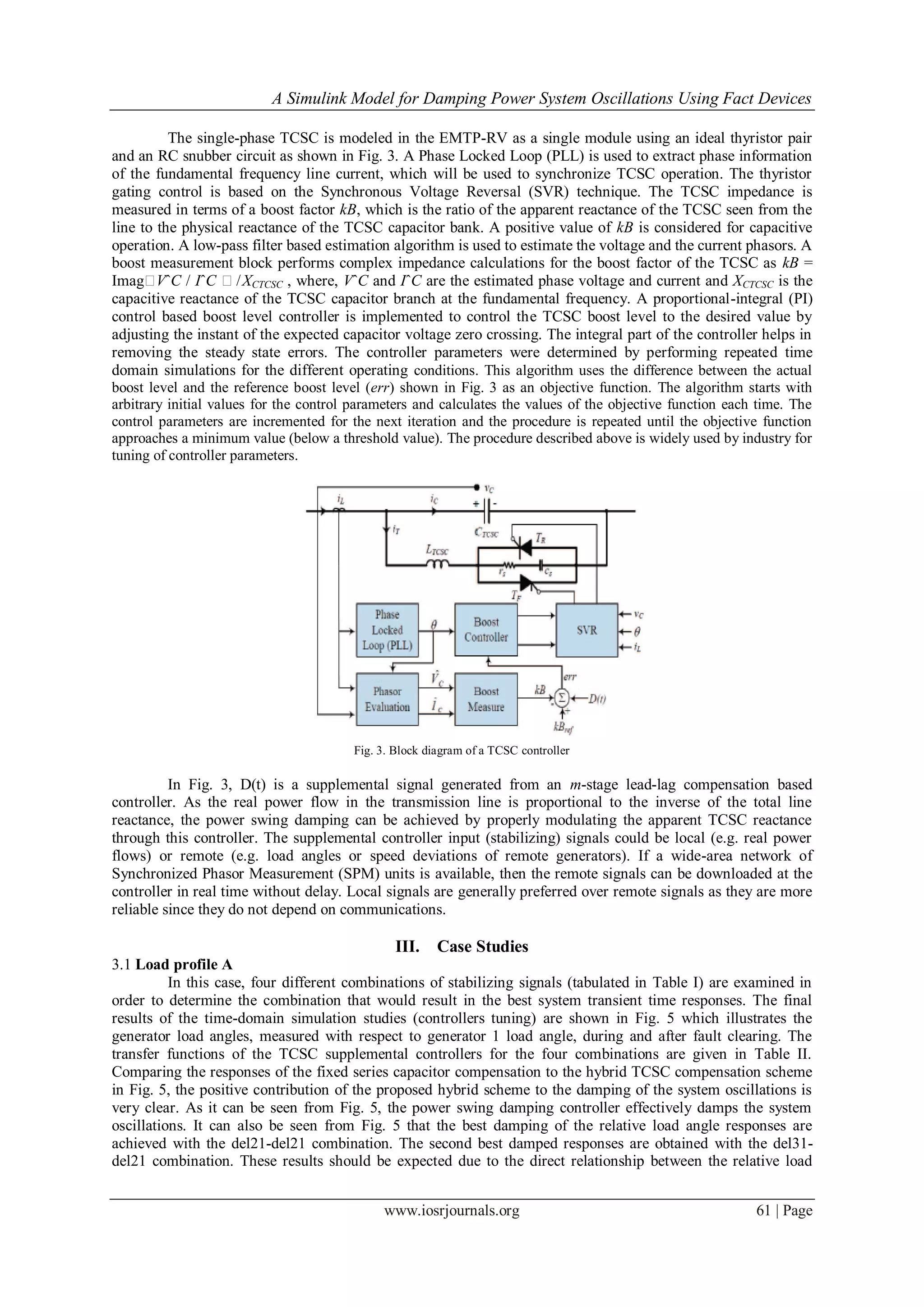
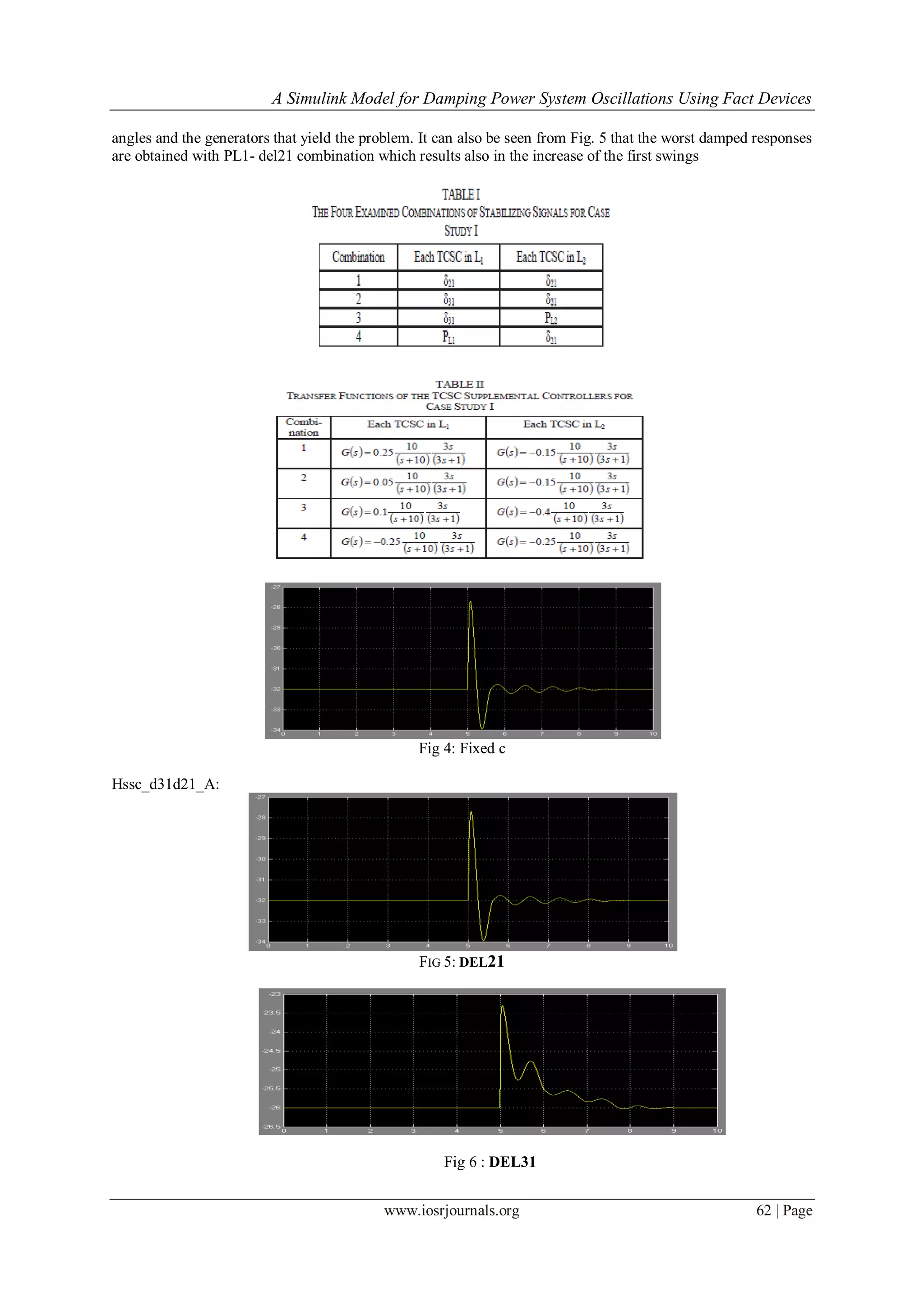
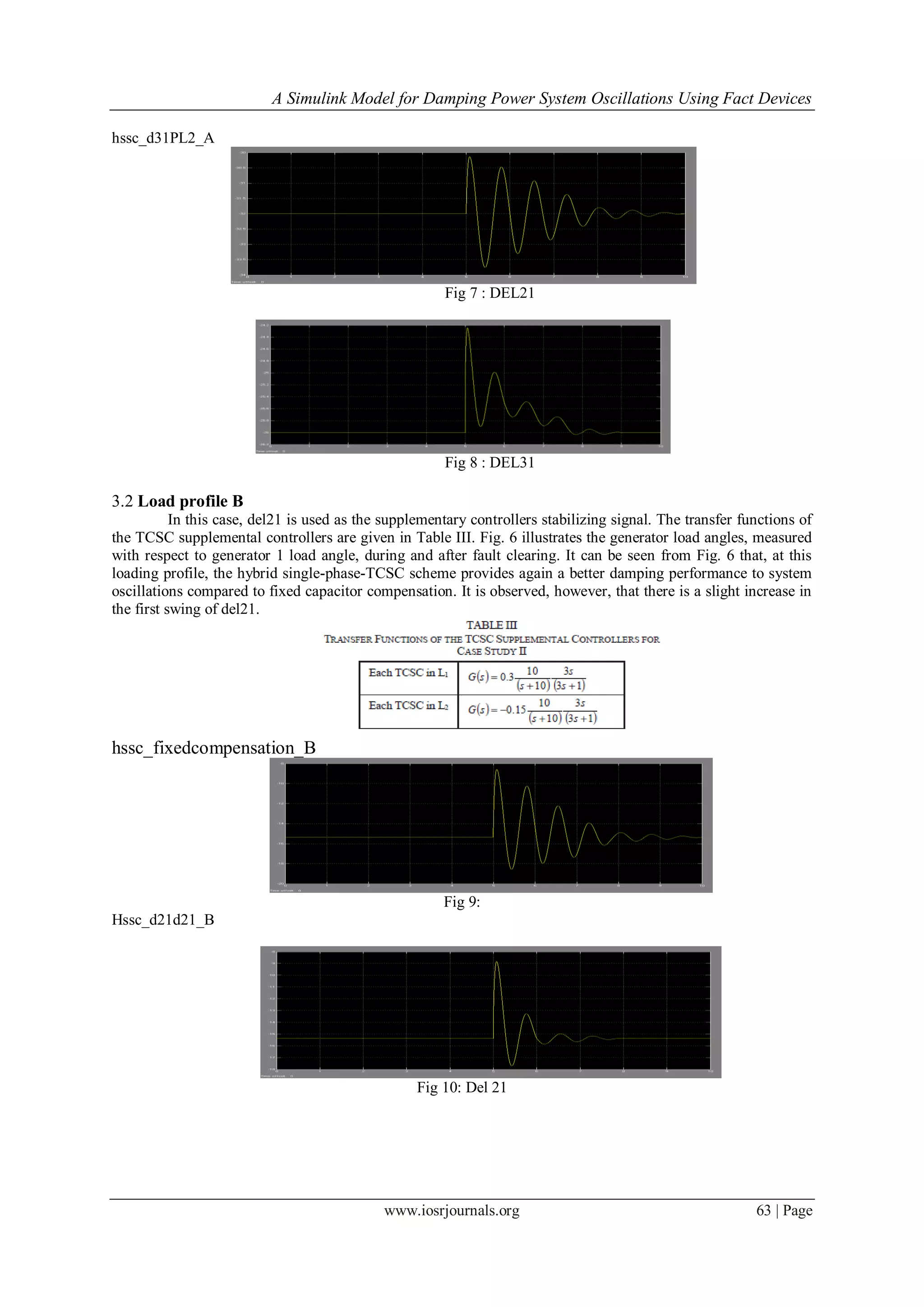
![A Simulink Model for Damping Power System Oscillations Using Fact Devices
www.iosrjournals.org 64 | Page
Fig 11: Del31
IV. CONCLUSION
The paper presents the application of fact devices in damping power system oscillations. The
effectiveness of the presented scheme in damping these oscillations is demonstrated through several digital
computer simulations of case studies on a test benchmark. The presented hybrid series capacitive compensation
scheme is feasible, technically sound, and has an industrial application potential.
.
REFERENCES
[1] Narain G. Hingorani and Laszlo Gyugyi, “Understanding FACTS, Concepts and Technology of Flexible AC Transmission
Systems,” IEEE Press, 2000
[2] M. Klein, G.J. Rogers and P. Kundur, “A Fundamental Study of Inter-Area Oscillations in Power Systems,” IEEE Transactions on
Power Systems, Vol. 6, No. 3, 1991, pp. 914-921.
[3] E.V. Larsen, J.J. Sanchez-Gasca and J.H. Chow, “Concepts for Design of FACTS Controllers to Damp Power Swings,” IEEE
Transactions on Power Systems, Vol. 10, No. 2, May 1995, pp. 948-956.
[4] B. Chaudhuri, B. Pal, A. C. Zolotas, I. M. Jaimoukha, and T. C. Green, “Mixed-sensitivity Approach to H Control of Power System
Oscillations Employing Multiple FACTS Devices,” IEEE Transactions on Power System, Vol. 18, No. 3, August 2003, pp. 1149–
1156.
[5] B. Chaudhuri and B. Pal, “Robust Damping of Multiple Swing Modes Employing Global Stabilizing Signals with a TCSC,” IEEE
Transactions on Power System, Vol. 19, No. 1, February 2004, pp. 499–506.
[6] R. Majumder, B.C. Pal, C. Dufour and P. Korba, “Design and Real-Time Implementation of Robust FACTS Controller for
Damping Inter-Area Oscillation,” IEEE Transactions on Power Systems, Vol. 21, No.2, May 2006, pp. 809-816.
[7] D. Rai, G. Ramakrishna, S.O. Faried and A. Edris,” Enhancement of Power System Dynamics Using a Phase Imbalanced Series
Compensation Scheme,” IEEE Transactions on Power Systems, Vol. 25, No. 2, May 2010, pp. 966-974.
[8] H. Xie and L. Ängquist, “Synchronous Voltage Reversal control of TCSC – impact on SSR conditions,” Proceedings of the Nordic
Workshop on Power and Industrial Electronics (NORPIE), 2004.
[9] Lennart Ängquist, “Synchronous Voltage Reversal Control of Thyristor Controlled Series Capacitor,” Royal Institute of
Technology, TRITAETS- 2002-07, ISSN 1650-674X.](https://image.slidesharecdn.com/k0755964-140508013827-phpapp01/75/A-Simulink-Model-for-Damping-Power-System-Oscillations-Using-Fact-Devices-6-2048.jpg)